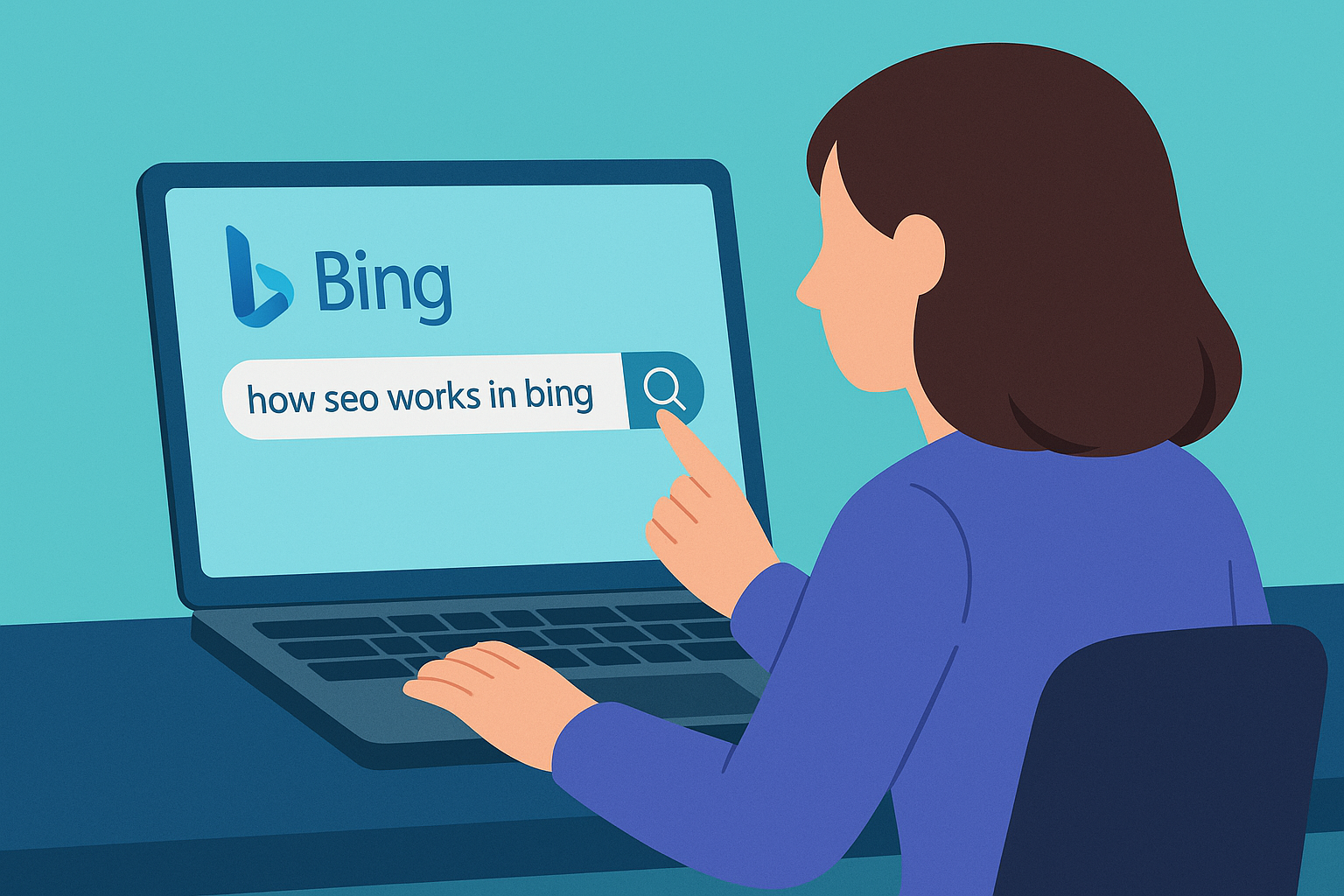Bing may not be Google, but it’s no small player either. With Microsoft Edge as the default browser, Windows integration, and Bing powering ChatGPT’s search features, Bing’s market share is steadily growing. Ignoring Bing in 2026 means leaving traffic (and customers) on the table.
Unlike Google, Bing often converts better for certain niches, especially B2B, finance, and older demographics. The traffic value is real, and the competition is lower.

The basics of how SEO works in Bing
At its core, Bing still relies on crawling, indexing, and ranking pages through Bingbot. While similar to Googlebot, Bingbot behaves differently:
- Bingbot is less forgiving with poorly optimized sites.
- Clear keyword usage still matters a lot (exact match wins here more than in Google).
- Content quality is key. This includes depth, authority, and topic relevance.
If you want to improve Bing rankings, you can’t just copy your Google SEO strategy. You need to understand Bing’s unique ranking factors.
Bing ranking factors (and what makes them unique)
On-page SEO signals
- Keywords in title tags, meta descriptions, and headings carry more weight.
- Content that is clear and keyword-aligned tends to perform better.
Exact-match domains
Unlike Google, Bing still favors exact-match domains (EMDs). If your domain name matches your keyword, you’ll see a boost.
Backlinks, quality over quantity
Bing prefers fewer, higher-quality backlinks from authoritative sites. Spammy link-building is more easily penalized.
Social signals, do they matter?
Bing claims to factor in social activity. While the direct impact is debated, strong social presence correlates with better Bing rankings.
User engagement metrics
This is where Bing gets serious:
- Dwell time (how long someone stays on your site)
- Bounce rate
- Click-through-rate (CTR)
“CTR is not just a metric in Bing. It’s a ranking signal.”
How CTR impacts Bing rankings (and how to leverage it)
Bing is far more transparent than Google about using CTR as a ranking factor. A higher CTR signals relevance, which can accelerate rankings. User behavior tells Bing whether your result is worth pushing higher.
In other words: more clicks = stronger ranking signals.
How to boost CTR and rank faster on Bing
Craft better meta titles and descriptions
Make them engaging, keyword-rich, and irresistible.
Use schema markup
Rich snippets help your listing stand out in Bing’s SERPs.
Use SearchSEO’s Bing CTR service
SearchSEO simulates real search behavior:
- Clicks come from real browsers on residential IPs
- You can target countries and keywords
- Traffic follows natural-looking patterns
We don’t guarantee rankings. But we do guarantee authentic engagement signals that Bing rewards.
SearchSEO’s Bing CTR service: Why it works
- Real search behavior simulation — not bots.
- Residential IPs — traffic looks real.
- Consistent CTR signals — sustained growth.
- Great for volatile or low-volume keywords.
Common mistakes in Bing SEO (and how to avoid them)
- Treating Google and Bing the same
- Ignoring keyword placement in titles and H1s
- Over-relying on backlinks
- Not tracking CTR performance
- Using spammy traffic sources
How to track Bing SEO performance the right way
Bing Webmaster Tools
Your go-to dashboard for clicks, impressions, and rankings.
Google Search Console + Analytics
Use for cross-checking organic performance.
Post-CTR campaigns
Look for improvements in impressions, clicks, and keyword positions.
Is Bing SEO worth it?
For many niches, yes. Bing rewards CTR faster than Google, often showing results in weeks. Combine CTR boosting with content and backlinks, and you’ve got a powerful edge.
Ready to boost Bing rankings signals on your site?
👉 Try SearchSEO’s Bing CTR service — Start with a free trial and see the data yourself in Bing Webmaster Tools.


.svg)

.svg)
%201.png)








.svg)